Opole
The dynamic capital of the Opolskie province boasts many historical sites of interest. It also happens to be the capital of Polish song, home to a famous amphitheatre and the Polish Song Museum. Time to warm up your vocal cords…
City of Song
“I prefer Opole to all other cities in the world”, sing the children in a music video by the Horyzont Foundation Helping Children and Families. You’ll understand why as soon as you arrive. Why not start your visit by letting the city’s newest symbol, The Lady of Pasieka, welcome you? This bronze, life-sized statue of an ethereal woman in a sweeping gown holding a dainty parasol on Pasieka Island, situated in the Radio Opole garden, is actually a reminder of the tragic flood of 1997. The greatest disaster in the city’s 1,000-year history, the flood left most of Opole under water. According to local legend, it was the Lady of Pasieka who heroically saved Opole’s residents…
Island-hopping: An Absolute Must
You might well want to dedicate a whole day to exploring Opole’s islands by bike – they are more than worth it. The clearly marked green route starts from the main railway station. Among other sights you’ll pass on your way, the route takes you past an architectural gem: the incredible post office building that looks remarkably similar to the Palazzo Pitti in Florence and was designed by an architect called Albrecht, who actually designed many of Opole’s buildings. Unlike the Italian original, this “palazzo” has added wings, and inside, modernist artists created a contemporary main hall. The police building on Korfantego Street is also worth noting. In a previous but equally important life, it was the railway company headquarters.
Across the Młynówka Canal, you’ll find a number of the city’s attractions grouped on Pasieka and Bolko islands. The iconic Piast Tower on Pasieka has been a symbol of Opole for centuries. Legend has it that the ghost of the lovely Ofka (Eufemia) sometimes looks down into the courtyard from the 35-metre tower, which used to house a dungeon. She’s said to have broken off her engagement to Opole Duke John II the Good in this very place, hurling the ring down to the floor from the tower. Today, the rebellious duchess is used to promote the Piast Tower, which you can also tour at night. Meanwhile, over on the north part of the island in a place called Ostrówek, you’ll find an early medieval settlement which nowadays is the only reminder of the ducal castle that once stood here.
From the incredibly old to the undeniably modern; the next symbol of Opole is the unmistakeable Millennium Amphitheatre, where the annual National Festival of Polish Song has been held since 1963. The amphitheatre is home to both the National Centre of Polish Song and the Polish Song Museum, which is also a meeting venue for well-known Polish singers. You tour the hip, interactive museum freely on your own, with the help of an audio guide. It may well be one of the most fun museums you’ll ever visit, and budding singers will absolutely love it. During your visit, you can watch a film about the Opole festivals, listen to many different kinds of music, see screenings of interviews with artists, take a look into the “costume wardrobe” with a selection of the festival singers’ stage costumes and spend time in the multimedia library. Most importantly, for a museum of song, you can sing! Not only that, you can record your performance in a sound booth and send it to whoever you want via email. The star quality of this museum, which recently got its own educational recording studio, was confirmed in 2017 when the Polish Tourism Organisation granted it a Best Tourism Product of the Year certificate.
Crossing the Castle Pond offers some fabulous photo opportunities. The Pond is also the stage for popular light and sound shows, which take place from May to the end of October. After making your way slowly through the six-hectare Nadodrzański Park and crossing the River Oder, you’ll come to Bolko Island, the Zoo being its most distinctive attraction. Features include an amphibian pavilion, a giraffe enclosure, a gorilla pen and the only Californian sea lions in Poland. Small children will love the mini-zoo, and all will love the rope park. By the time you leave, you may even find you’ve somehow adopted an animal!
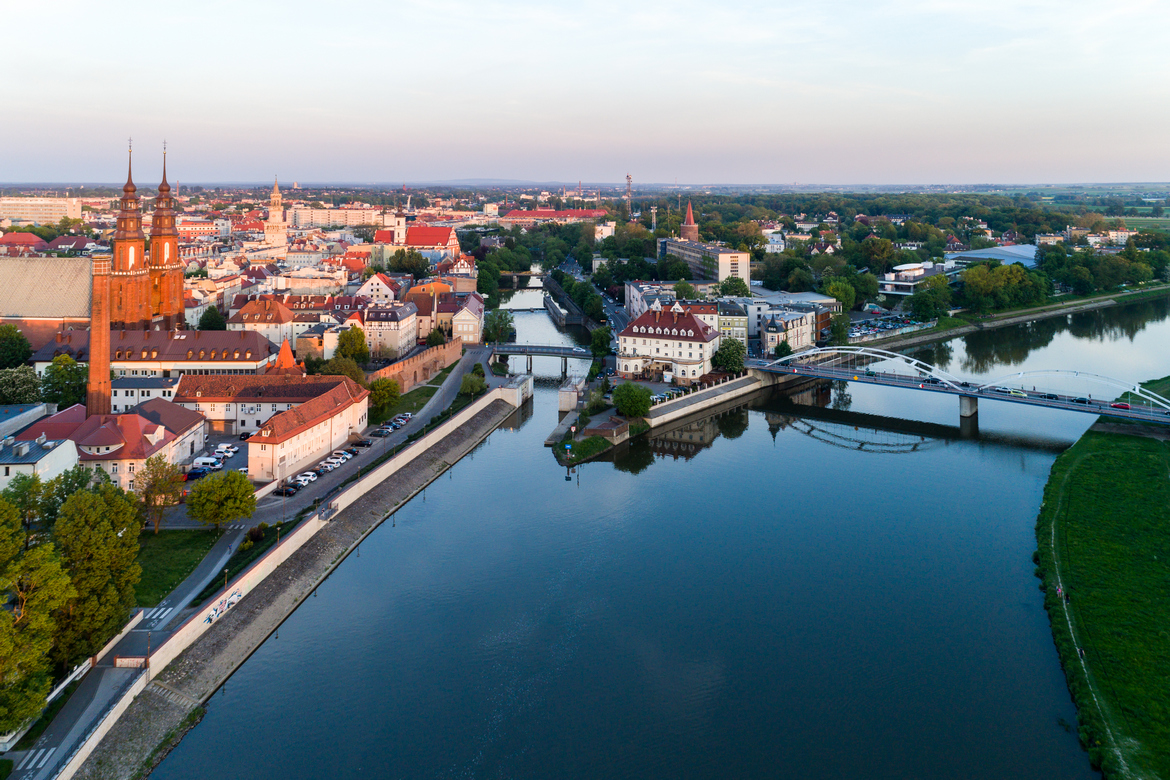
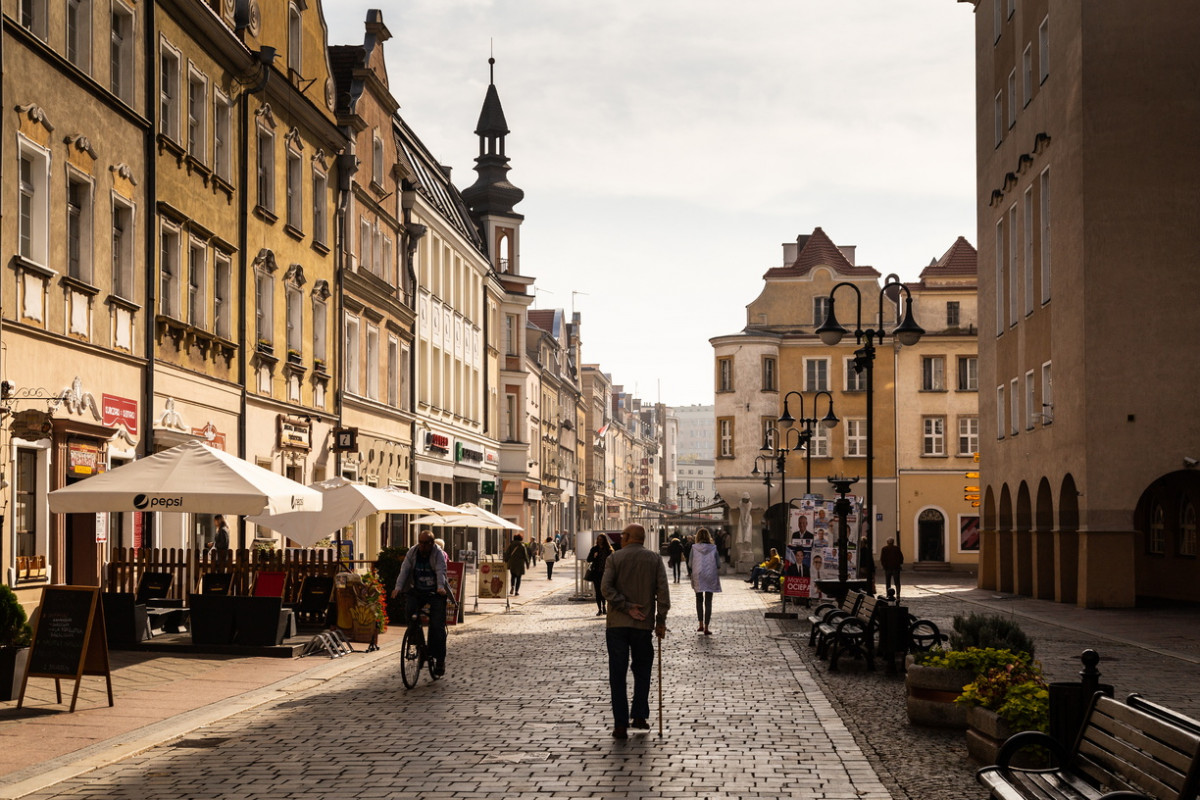
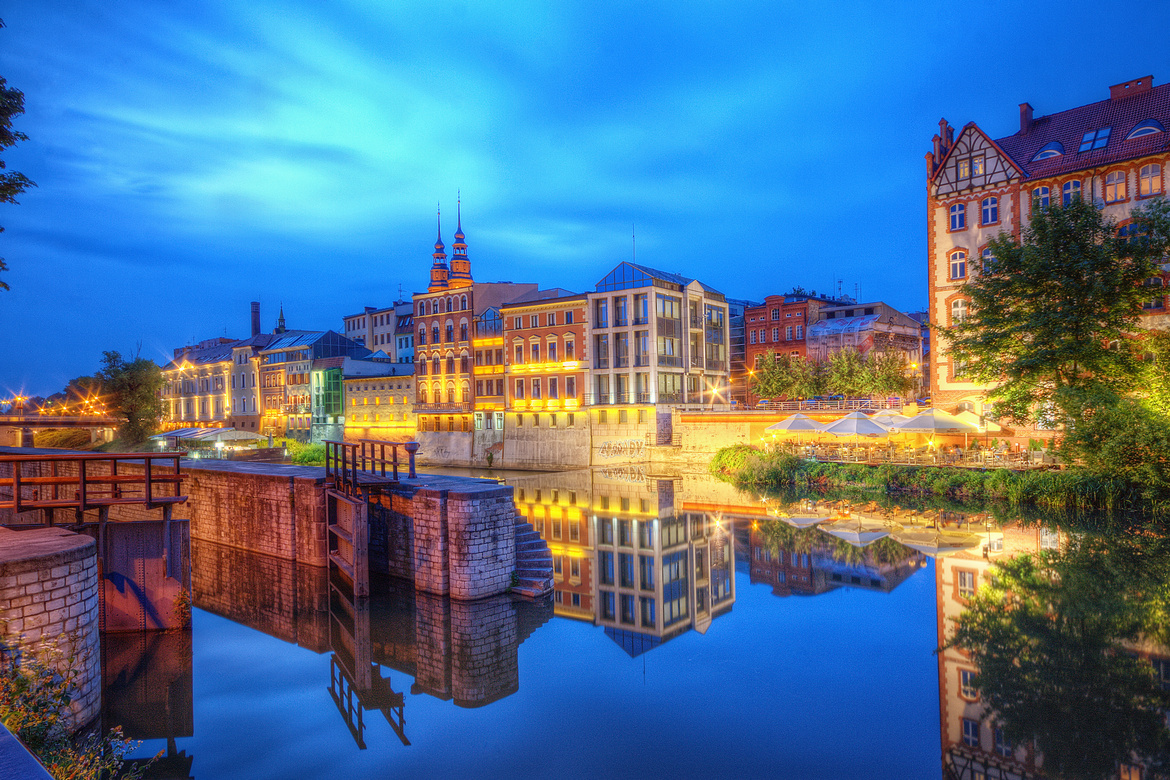
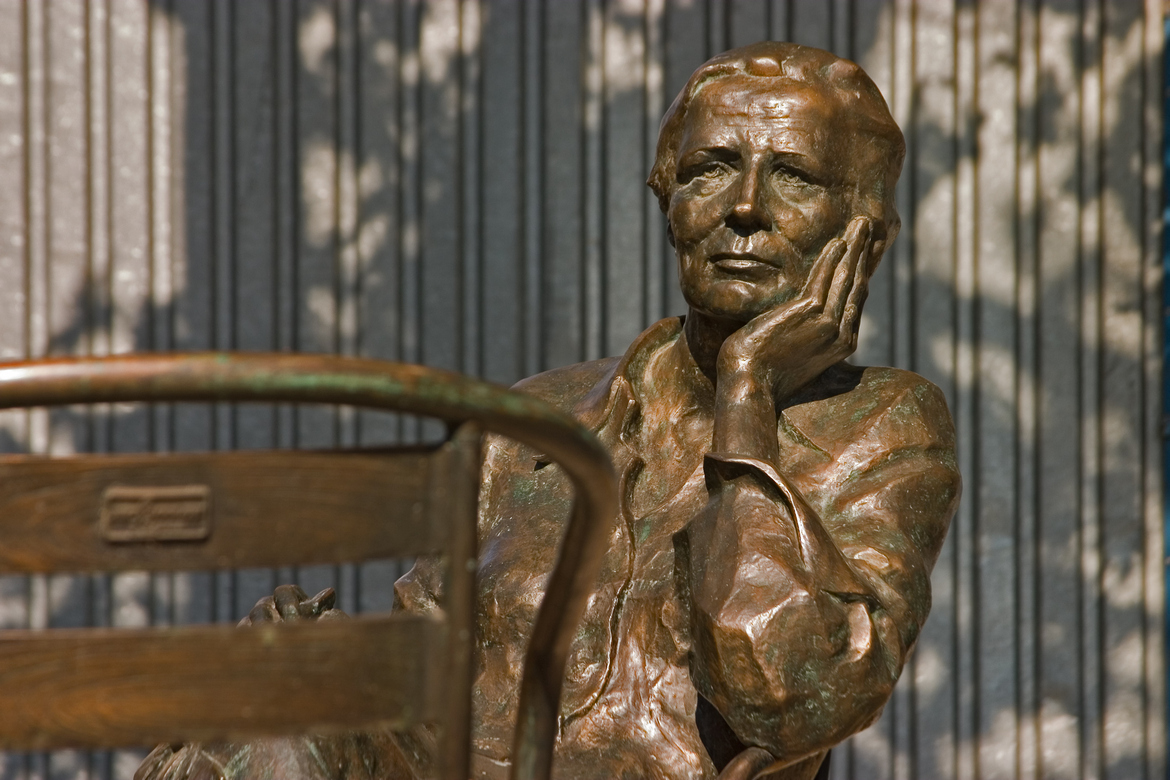
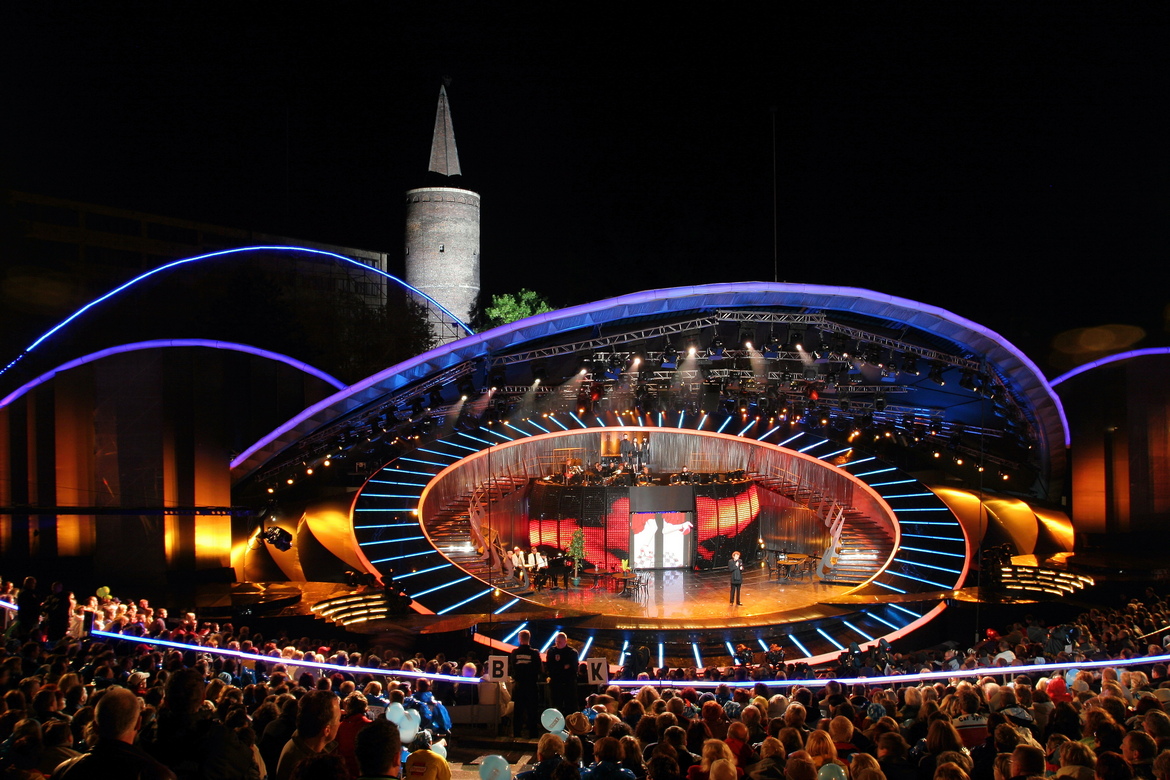
Other City Highlights
Although the Soviet offensive in 1945 unfortunately destroyed a large part of Opole’s Market Square, it was carefully rebuilt after the war and is definitely worth seeing, especially the tenements at number 32 and at number 1, with its characteristic cylindrical keep. The latter, called the Ducal House or House under the Lion, was allegedly a stopover for John II Casimir Vasa, King of Poland and Sweden, during the Deluge (the Polish-Swedish war). Some also say that a proclamation calling on the king’s subjects to fight against the Swedes was written here in this very building.
Right in the centre of the Market Square is the neo-Renaissance Town Hall that, somehow, miraculously survived the wartime bombings. If it reminds you of anywhere, you’re not alone; it too is inspired by the architecture of Florence, this time the Palazzo Vecchio. A year ago, the Market Square gained an impressive new addition – an equestrian statue by local sculptor Wit Pichurski, portraying Duke Casimir I of Opole, the man who founded the city on the right bank of the River Oder over 800 years ago. A special app, designed to accompany the new Learn the Story route, brings this and other statues to life as their fascinating stories are told to you through your phone. The Market Square is a social and cultural hub, where many events are held, including concerts, fairs and film screenings.
The highest point within the Old Town is the recently renovated University Hill, also known as St Adalbert’s Hill, where campus buildings stand among lush greenery and fragrant flowers. The neighbouring Artists’ Square features several sculptures by Prof. Marian Molenda from the University of Opole’s Institute of Art. There’s one of Agnieszka Osiecka, whose songs won awards at the local song festival, another of Czesław Niemen, who electrified the festival audience with his song “Strange Is This World”, and also one of Jerzy Grotowski, founder of the legendary Theatre of 13 Rows. The city also hosts the annual Opole Theatre Confrontations Festival.
The Old Town is connected to Pasieka Island by the charming Yellow or Castle Bridge. From here, the Venice of Opole stretches along to the Cathedral Bridge along the Młynówka (Millrun) Canal, the old riverbed of the River Oder, whose name harks back to a time when mills operated in the area. The comparisons with the world’s most famous canal city are even more inevitable at night, when the illuminated buildings are reflected in the still canal waters, creating picture-perfect scenes.
The Opole Cathedral, with its vertiginous towers, houses the famously miraculous image of Our Lady painted on a board and is an important place of worship for many. The painting is even believed to have saved the people of Prague from the plague and John III Sobieski is said to have prayed before a copy in Piekary on his way to help Vienna.
Museums that tell Opole’s story
Like museums? You’ll really enjoy your visit to Opole if you do. The Old Town is home to the regional Museum of Opole Silesia, composed of the historical buildings of the eye-catching Baroque former Jesuit college, together with a classical house and a tenement building, whose Burgher interiors have been carefully reproduced to impressive levels. Here you can get an idea of mid-18th-Century Opole, thanks to a model of the city from the era and galleries of Polish paintings. There’s also chance to discover the history of the hugely successful ceramics industry in Upper Silesia.
Meanwhile, the fabulous Opole Rural Museum invites you take a stroll around ten hectares of 18-20th Century Opole in this living, open-air museum that boasts a collection of wooden buildings which make up regional farmsteads, a church, a tower, an inn, a school, a forge, windmills and a manor granary. These are all interspersed with beautifully kept flower and vegetable gardens, while barley, buckwheat, parsnips and millet grow in the fields. There’s no better antidote to the stress and noise of the city than to spend a few hours in this man-made natural paradise, especially during the Easter Fair, when you’ll enjoy all manner of attractions that include the marzanna folk ritual of drowning a straw figure representing winter, stalls selling beautifully decorated Easter eggs, baking and, of course, tasting of artisan bread.
Opole Then and Now is a tourist route dotted around the city, showcasing a few of the most famous sites from the city’s history. At each point on the trail, you’ll find a glass exposition case, showing a historical photo of the site, conveniently placed to enable visitors to compare the view from the past directly alongside the view today.

